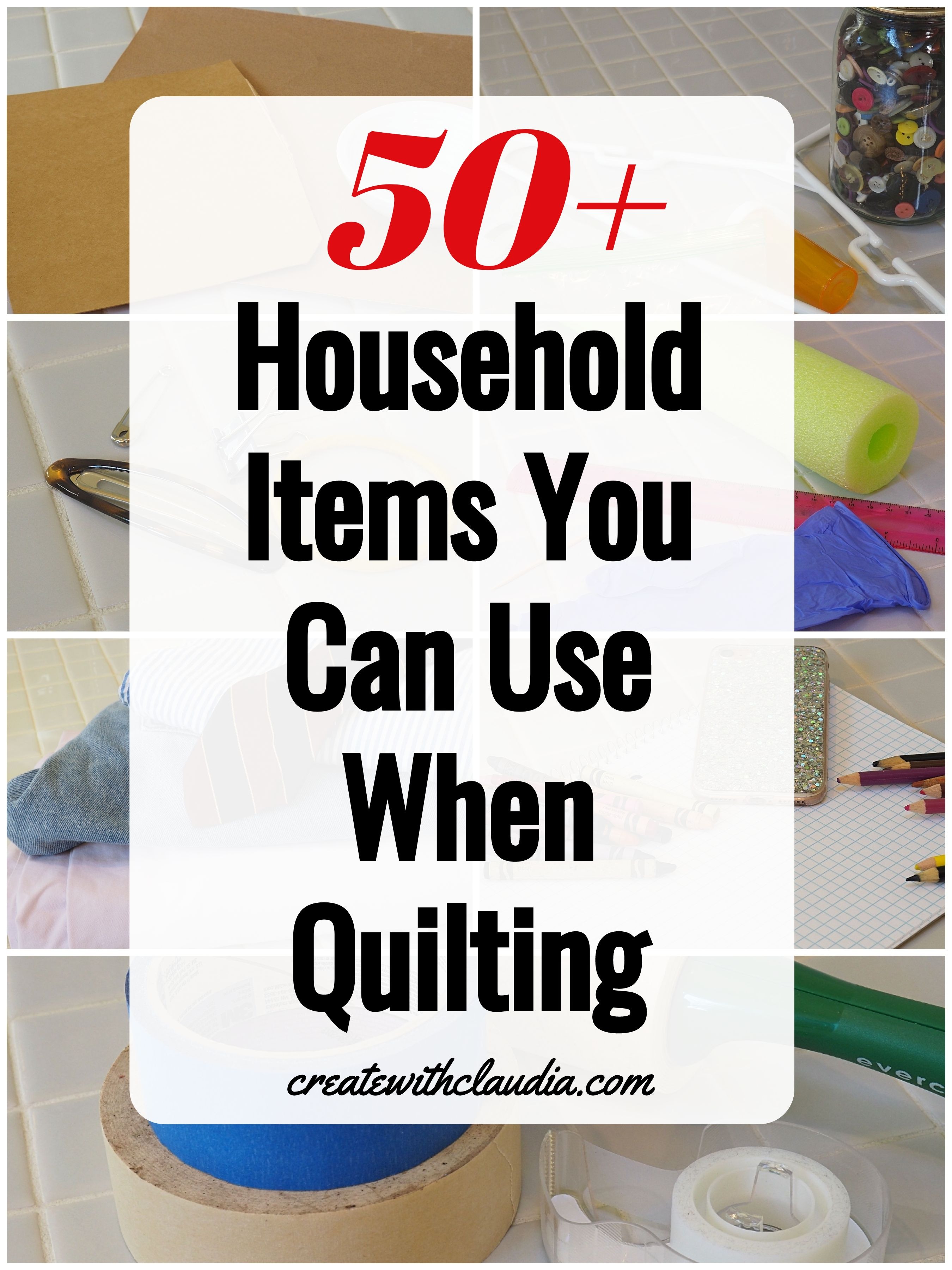
Everyday Household Items For Quilting
There are plenty of reasons people want to use everyday household items for quilting.
Let’s be honest, quilting can be pricey. When you are first starting out you may not want to buy all of those fancy notions until you are convinced that quilting is the hobby for you. Even if you are not a beginner, you might be looking for budget-friendly alternatives for some supplies.
Not only that, but quilters sometimes need something quickly, and just don’t feel like running out to the store.
Whichever category you fall in, here are 50 everyday household items for quilting.
More Household Items You Can Use in Quilting (From YouTube Viewer Comments)
Fabric
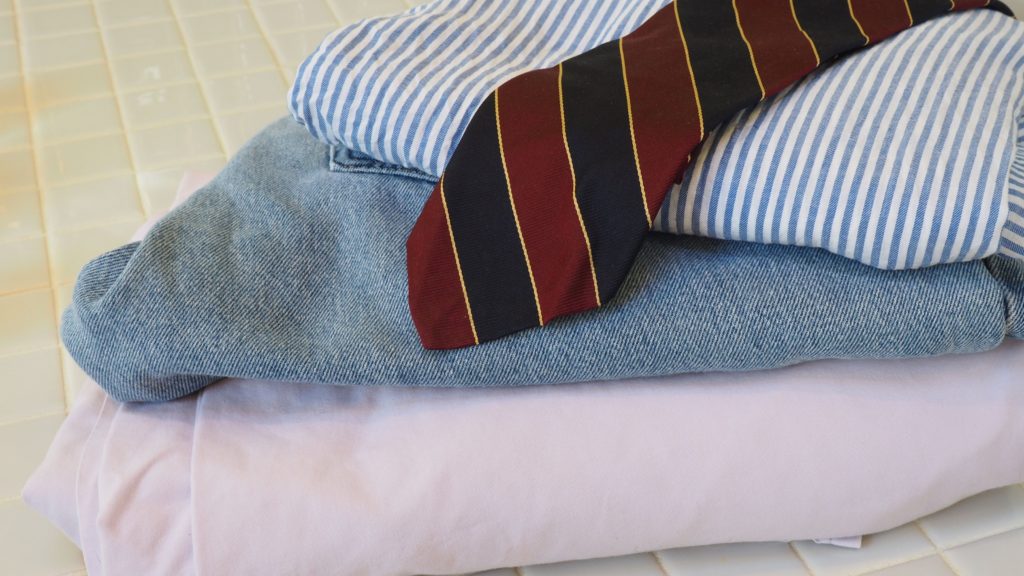
Fabric can be really expensive, so why not save some money and use items you have around the house. Depending on what you use, fabric is ideal for a memory quilt too. Not only is it unique, it’s a great way to recycle. Just remember that in some cases, these fabrics won’t be 100% cotton so they can affect your quilt in various ways.
Bed Sheets – For backing and, when cut, for piecing.
Shirts – Great patterns and colors, ideal for piecing.
Neckties – Nice for memory quilts, but tricky to work with.
Blue Jeans – Probably one of the most popular items of clothing to recycle. They have a dense texture, so that needs to be considered.
Handkerchiefs – Ideal for memory quilts like this one, but need extra attention when sewing.
Fleece Blankets – Depending on the texture type of fabric, it’s a substitute for a design wall. They can also be used for quilt backing and even batting, but it can be thick and difficult to work with. It also may not hold up well down the line.
Lightweight Towels – Can be used as a substitute for batting, but it will definitely give a different thickness and feel to a quilt.
Storage
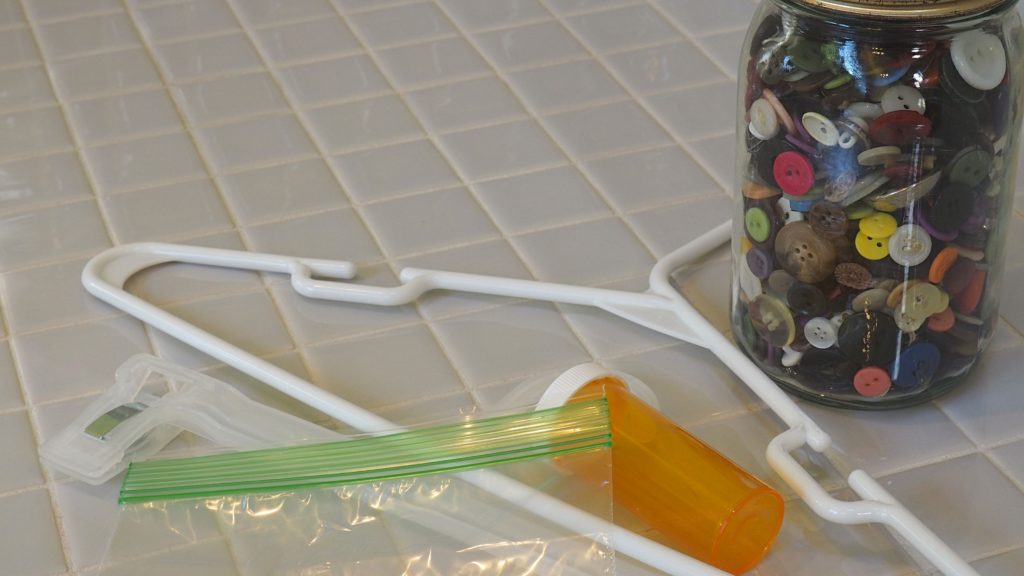
Quilting supplies can quickly get out of hand, so there are plenty of storage ideas around the house.
Mason Jars – Great for buttons, bobbins and all sorts of other small things. They are glass so you can see what’s in them too.
Zip Top Plastic Bags – All sizes are useful for storing various fabric scraps and other notions.
Shoe Boxes – They may not look great, but fabric scraps fit well in them.
Old Prescription Bottles – Good for all kinds of small items. Depending on the size, bobbins fit well in them too.
Hangers – Instead of folding quilts or quilt tops, hang them up on sturdy hangers. Also, depending on your décor, they can be a nice way to display a quilt.
If you want fancier quilt storage items, here are a few ideas you might like
Items You Can Use
You can find some of the items in this blog post in my Amazon Store.
As an Amazon Associate I earn from qualifying purchases.
Quilt Design
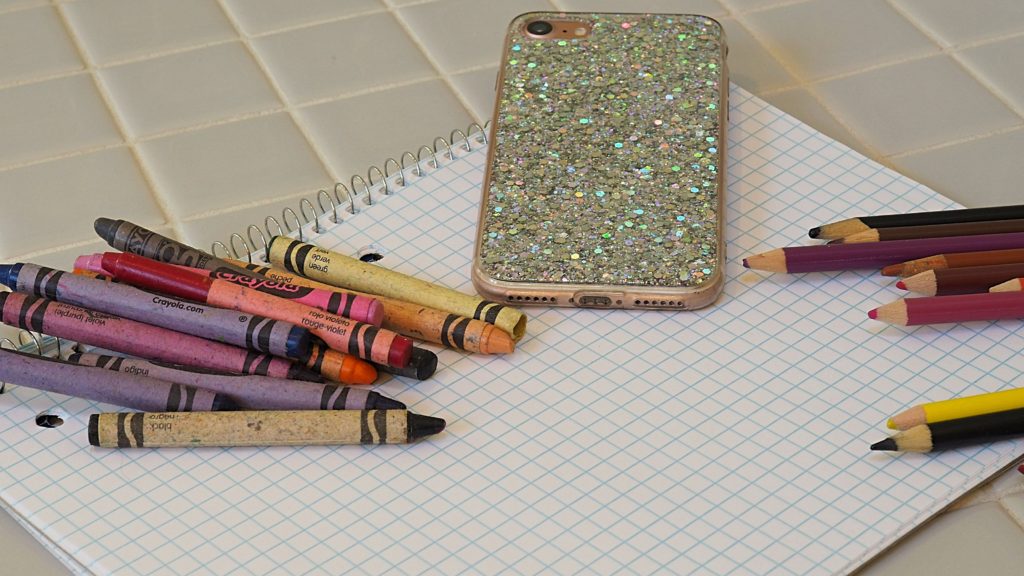
I’m not knocking all of the wonderful quilt software available, and you can do incredible things with them, but sometimes it’s easier just to pick up a pencil and start drawing. It’s cheaper too.
Cell Phone – Ideal for choosing quilt layouts, take pictures and then go back and choose which look is your favorite. Also great for choosing fabric value. Just change the photo from color to black and white and you’ll be able to see how the fabric looks.
Colored Pencils – It’s like you are kid again when you are designing with with colored pencils. The best part is they can be erased, so if you change your mind about a color in your sketch, you can change it.
Crayons – When sketching out a new quilt, crayons are a great choice. Raid your child’s box of broken ones for all of those pretty colors.
Graph Paper – Ideal for designing quilts.
Green and Red Glassware – Looking through green or red can help determine color value and contrast on your quilts. It needs to be dark red and dark green.
Peephole – Go to the hardware store and pick up a door peephole. Then look at your quilt through it. It’s a great way to see the entire quilt so you can get an idea of what it’s going to look like.
Quilting and Sewing
I bet you are going to be surprised at how many everyday household items for quilting you already have.
Basting and Binding
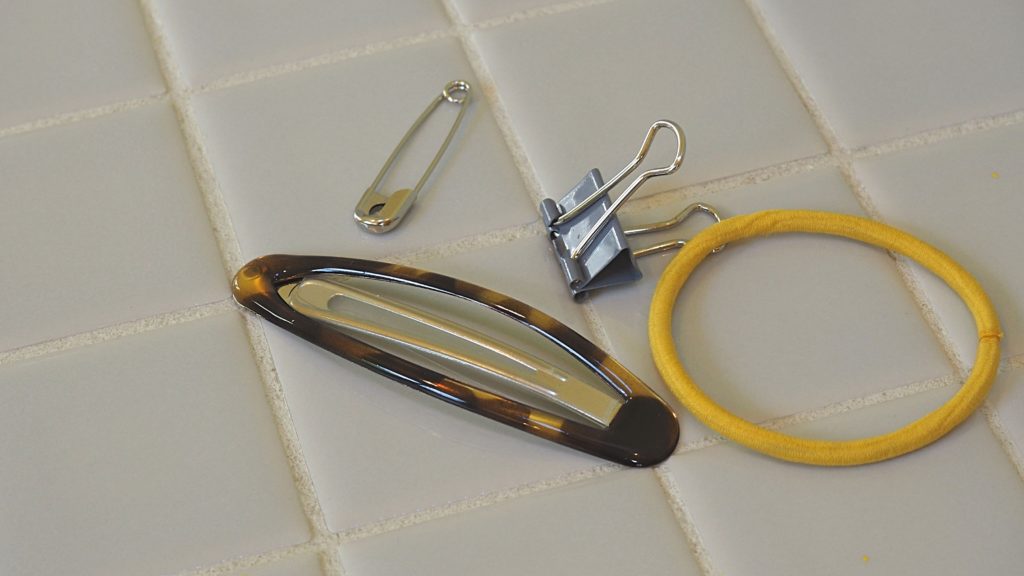
- Binder Clips – Ideal for holding binding in place. Just make sure they aren’t old and dirty.
- Clip Barrettes – Use them to hold down binding.
- Grapefruit Spoon – Helps when basting a quilt with safety pins.
- Safety Pins – Perfect for basting a quilt, and ones from the office supply store are cheaper than the quilt store ones. One note of caution though, be careful that the ones you use can’t rust.
- Paper Towel Tubes – By wrapping binding around the tube it makes it easier to apply it to the quilt.
Marking
I have a couple of quilts which bear the scars of using the wrong marking tools, so when it comes to marking quilts, I am extremely cautious with what I use. Therefore, I suggest using tools made specifically for marking fabric and that you test them.
I will use pencil on the back (wrong) side of fabric to add a sewing guide line, but only with a very light touch, and if I am sure that it won’t come through the fabric and be seen on the right side.
Piecing and Sewing
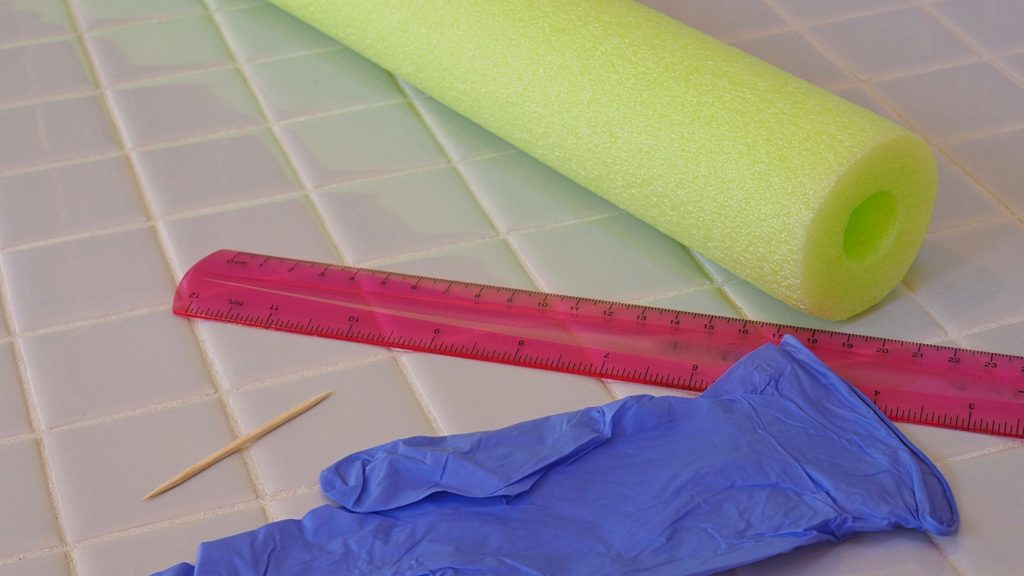
- Chop Sticks – Can be used to straighten out corners when turning an item, like a pillow case, right sides out.
- Clothes Rack – Set up next to a sewing machine, it’s an easy way to lay out strips of fabric and keep organized when sewing or piecing a top.
- Craft Knife – Can be used to get in those tiny spots to get at threads.
- Latex Gloves – Admittedly not the most comfortable thing to wear, they can be used in a pinch when machine quilting (so the fabric doesn’t slip). They are also good for hand quilting. The gloves easily grasp those small, slippery needles. Tip: If the gloves are tight enough, cut off the fingers and just use them instead of the whole glove.
- Masking Tape – Use it to lay the backing down on the floor when you are getting ready to baste your quilt. You can also use a small piece to give you a 1/4” seam guide on your sewing machine.
- Pool Noodles – Can be used to roll up the tops during the basting process and can also be used for quilt storage. The nice thing about rolling quilts is that they don’t get the creases that come with folding.
- Rubber Fingers – Another way to grasp needles when hand quilting is those rubber fingers that can be found in office supply stores. They do a take a bit of getting used to.
- Ruler – While quilt rulers really are the best things to use, you can always use a ruler or a yardstick if you are in a pinch.
- Scrap Paper – Instead of specialized plastic markers to keep track of your rows, just use scrap paper and a pin.
- Shelf Liner – A piece of the rubberized liner under your sewing machines helps it keep from slipping.
- Tissue Paper – If you need to trace something, but don’t have tracing paper, tissue paper works just as well. Just don’t used any with colors, only white. The colors can rub off onto fabric.
- Toothpicks – Ideal for those tiny spaces when picking out stitches.
- Wooden Kitchen Spoons – Used when hand pressing
If you like fancier quilting notions, here are some you might be interested in.
As an Amazon Associate I earn from qualifying purchases.
Miscellaneous
- Elastic Hair Bands – Good for holding together blocks and fabrics.
- Lint Remover – Perfect for getting rid of all of those loose thread and pet hair on your work.
- Magnetic Bowl – Found in hardware stores, these bowls are perfect for your pins. Even better, make your own with this easy tutorial. They are much prettier!
- Rubber Bands – Roll up your completed blocks and use a rubber band to keep them organized.
- Scotch Tape – Depending on what is being sewn, a little scotch tape is a temporary way to keep something from unraveling. Also works on spools of thread so that the end doesn’t unravel.
- Toothbrush – For cleaning out the sewing machine.
- Tweezers – Perfect for pulling out any small threads
Appliqué
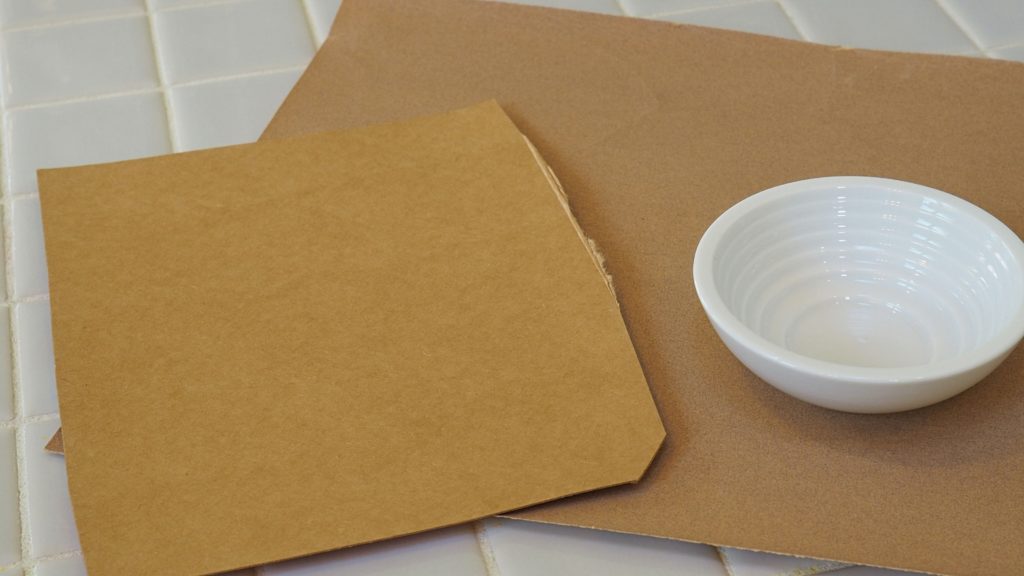
Besides what is listed here, there are plenty of other things from around the house that you can use for making appliqué templates. It’s easier than you think.
- Card Stock – Good for appliqué and other templates
- Cardboard – Perfect for making quilt templates and a nice way to recycle those old cereal boxes.
- Compass – For drawing circles.
- Dishware – From cups to plates, dishware makes great appliqué templates.
- Fine Sandpaper – Often used by people that appliqué, it’s a great non-slip surface.
- Freezer Paper – Ideal for appliqué
- Glue Sticks – Grab a few around back-to-school time, when they are super cheap. They can be used in appliqué. Just make sure it’s the washable kind and that you test it on your fabric first.
- Plastic Packaging Inserts – Some things items, like toys, come in heavier plastic packaging. That plastic can be used for templates.
- Windows – Good for using as a light box when tracing patterns.
What Everyday Household Items for Quilting Do You Use?
You don’t have to spend a fortune on fancy quilting notions, especially when you are just starting out. Some of these everyday household items for quilting can help you get going, and save you some money. I can’t tell you how many things I have in my sewing room that I spent money on, only to have them sit and gather dust.
Do you use anything that isn’t listed here? I’d love to hear about it. Drop me a comment and let me know what it is.
Happy Quilting!


19 Comments
Kat Hazelett
September 13, 2019 at 9:06 AMI still have ” antique” templates that my grandmother made from cereal boxes and oatmeal boxes. Having lived through the depression, she knew how to “recycle, make do, use up, or do without”. I was fortunate to learn a lot from her. She saved her basting threads on otherwise empty spools, worn out clothes for quilting pieces and handkerchiefs, worn out sheets for hand towels and dish towels, feed bags and flour bags were treasures for clothing and quilts.
createwithclaudia_7j76hs
September 14, 2019 at 6:46 AMHow nice that you still have those homemade templates and the lovely memories of quilting with her. Things like that are so special. Thanks for your comments.
Carol Christ
September 15, 2019 at 9:31 PMInstead of a fancy tool to close safety pins when basting, I use a size 0 crochet hook. The hook grabs the open part of the pin and holds it as you press the pin to close.
createwithclaudia_7j76hs
September 16, 2019 at 6:30 AMOh – That’s a good idea! Thanks!
Becky
September 14, 2019 at 8:39 AMI have found gardening gloves with the rubber palms and fingers awesome for quilting and are not as hot as the rubber gloves and usually find them at wal mart or a hardware store for a couple of bucks work great.
createwithclaudia_7j76hs
September 16, 2019 at 6:29 AMGood tip!
Linda Mikula
September 16, 2019 at 12:30 PMIn a pinch I’ve used a plastic cutting board from the kitchen for rotary cutting pieces…especially when cutting smaller pieces up for scrap quilts.
createwithclaudia_7j76hs
September 16, 2019 at 1:07 PMGood tip!
Deb Margerum
September 18, 2019 at 1:07 AMI use clothes pins that I number to put on my rows so I always know the top and the row number
createwithclaudia_7j76hs
September 18, 2019 at 6:36 AMThat’s a good idea, and it doesn’t poke holes in the fabric! Thanks!
Sarah Major
September 21, 2019 at 1:03 AMI use masking tape to mark straight lines on smaller quilts or table runners. It works.
createwithclaudia_7j76hs
September 23, 2019 at 7:41 AMGood to know. Thanks for reading.
MarySmiles
April 16, 2020 at 8:22 AMI watched your video with pen in hand; I didn’t realize you could link to an article or a list… What fun! I am a newbie and am finding that quilting can be an expensive hobby if you run out and buy everything brand new; so, this list was really helpful.
createwithclaudia_7j76hs
April 17, 2020 at 5:36 AMGlad it was helpful. Thanks for reading.
Lise Duclos
June 27, 2020 at 1:28 PMI always have 2 dollar store trash bins by my machine, the one on the right is for scrap pieces of fabric which is then used for filling doggie beds, and the one on the left for everything else such as paper when paper piecing etc. I use a storage container for paper crafts to store my blocks in until all are done and ready to be sewn together (they are 12 inches square, plastic, with a latch). I also use small plastic bins that fruit and vegetables come in, one small one I use to save some leader fabric in next to my machine, others I use to save my applique pieces in when cutting (I then put them in a zip lock bag with the pattern number or name written on the bag).
Love all your hints and tips. Keep them coming.
createwithclaudia_7j76hs
June 28, 2020 at 7:39 AMGood ideas. Thanks!
Cinda F Brown
January 19, 2023 at 11:01 PMI take an old flannel backed plastic tablecloth and put it up on my design wall. Plastic side facing the wall While making blocks I just stick my blocks on the flannel. It sticks without being permit.
createwithclaudia_7j76hs
January 20, 2023 at 8:45 AMGreat tip. Thanks!
Marsha Clark
April 6, 2023 at 11:54 PMTerrific list. I have hands that have gotten old and pulling the needle when hand quilting is difficult at times. I discovered using a piece of a balloon works great and bright colored ones are easy to see laying on the quilt.